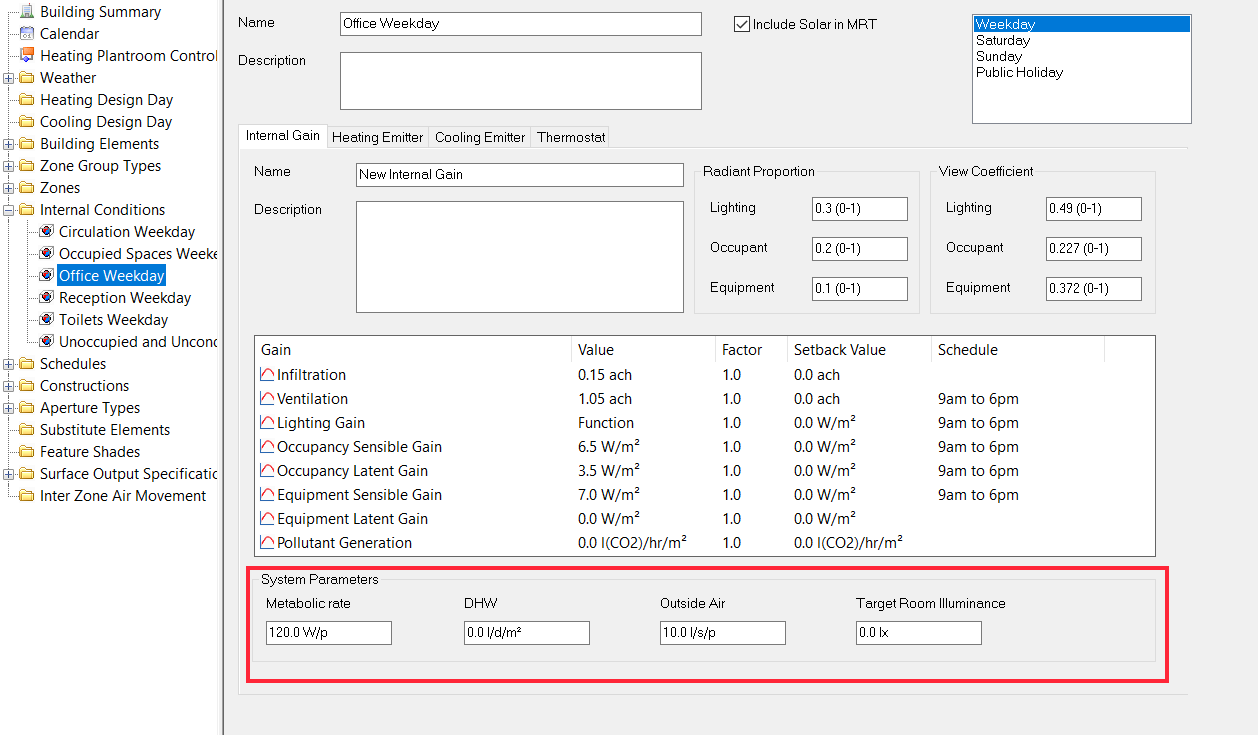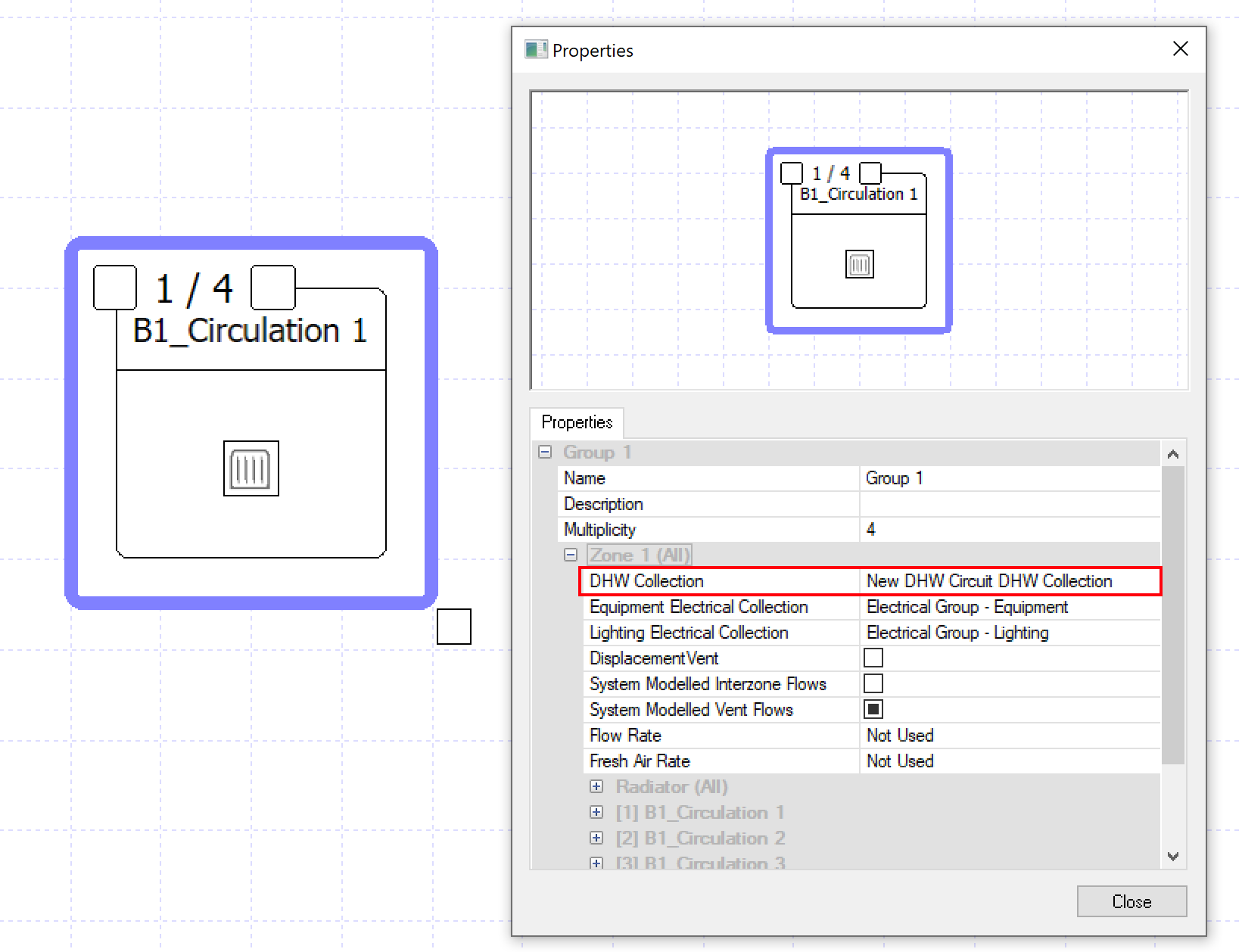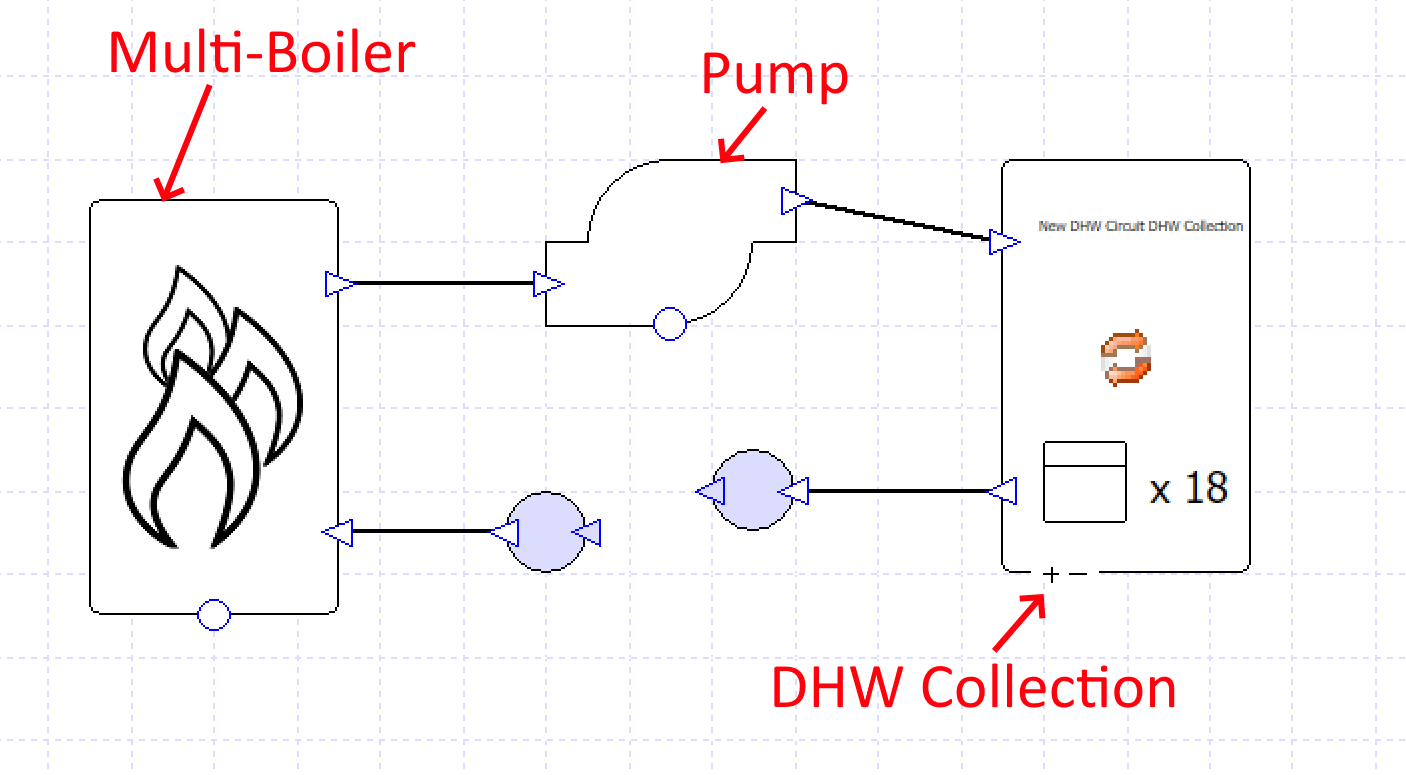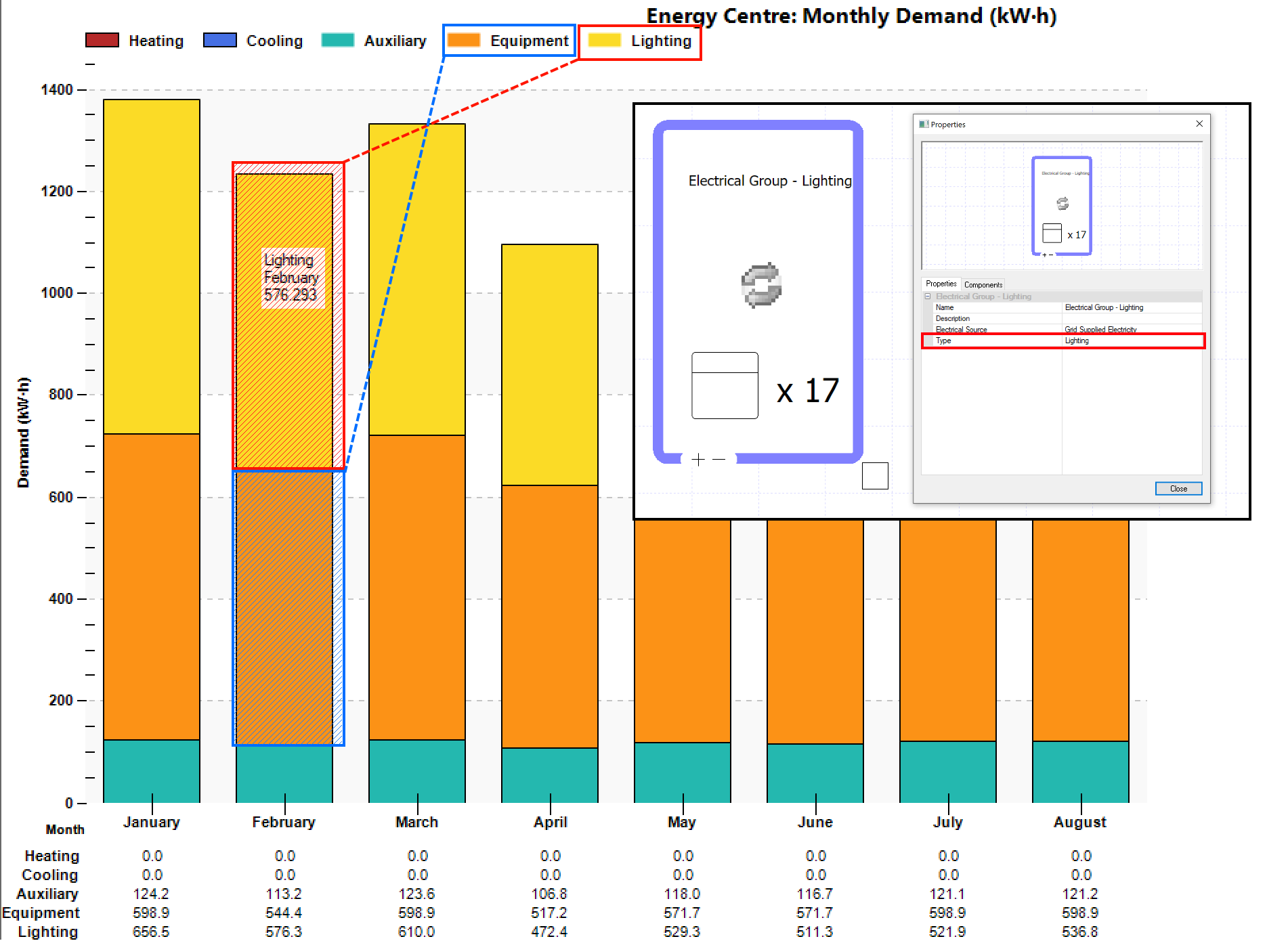Collections¶
When introducing plant rooms, we explained that collections group the supporting non-airside components of an HVAC system that feature in Heating, Cooling and Domestic Hot Water circuits.
The collections are part of circuits that model how the components in the airside system achieve their heating/cooling effects.
To recap, the following collections are available in Tas Systems:
Heating
Cooling
DHW (Domestic Hot Water)
Refrigerant
Electrical
Fuel
The heating & cooling circuits concern the flow of non-compressible fluids such as water, that carry heat from boilers and chillers to components such as chilled beams, radiators and heating coils.
The refrigerant circuits concern compressible fluids that are used to move heat as part of a heat pump configuration.
The DHW circuits concern how water is heated for showers and sinks. These circuits can feature solar hot water.
The electrical circuits concern how components powered by electricity receive their power – for example, by grid supplied electricity or solar energy.
Heating Collections¶
Heating collections contain the airside components that increase the temperature of the air in the system by directly consuming energy. A basic heating circuit might look like this:
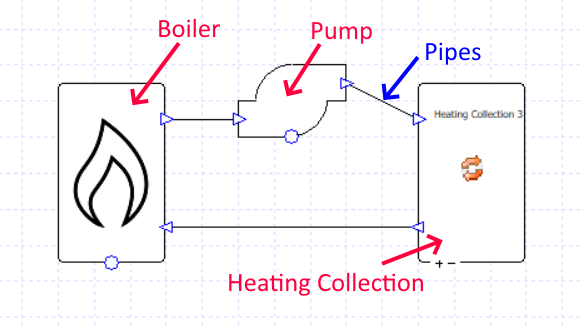
The pump provides the pressure to move the fluid throughout the circuit.
Different fluids can be applied by dragging a fluid onto the pipes:
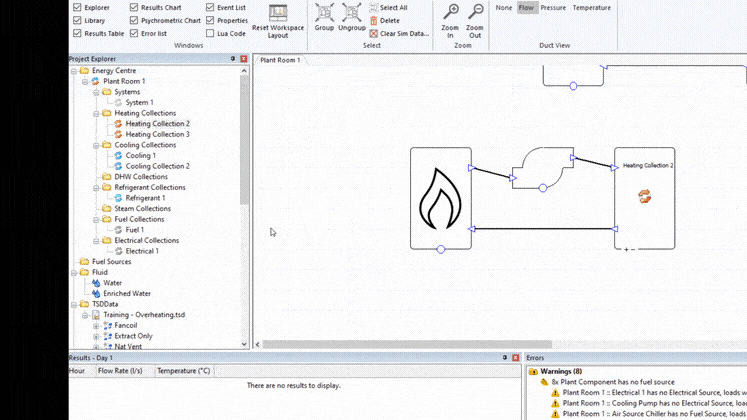
You can see which airside components are part of a heating circuit by double clicking on the heating collection:
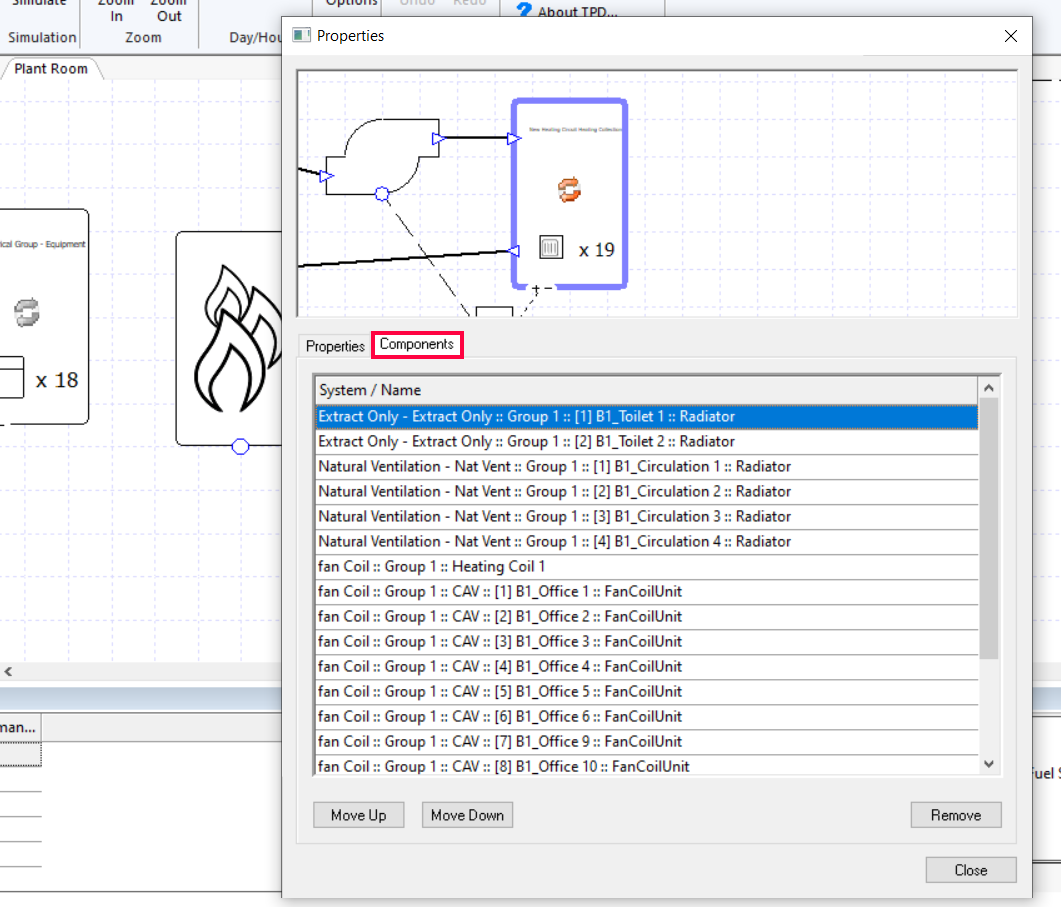
For more information about heating collections, see the heating collection component in the component guide section.
Cooling Collections¶
Analogous to heating collections, cooling collections group the airside components that decrease the temperature the air in the system by directly consuming energy. A basic cooling circuit might look like this:
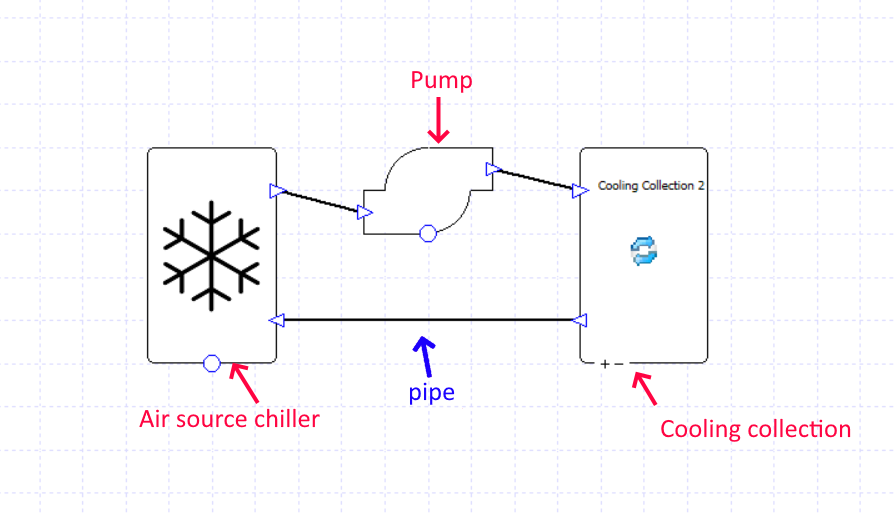
The pump provides the pressure to move the fluid throughout the circuit.
As with all collections, you can view the components associated with the collection by double clicking on it.
Cooling collections can feature in circuits that contain refrigerant collections if heat is transferred between the two mediums (non-compressible fluid e.g. water & refrigerant):
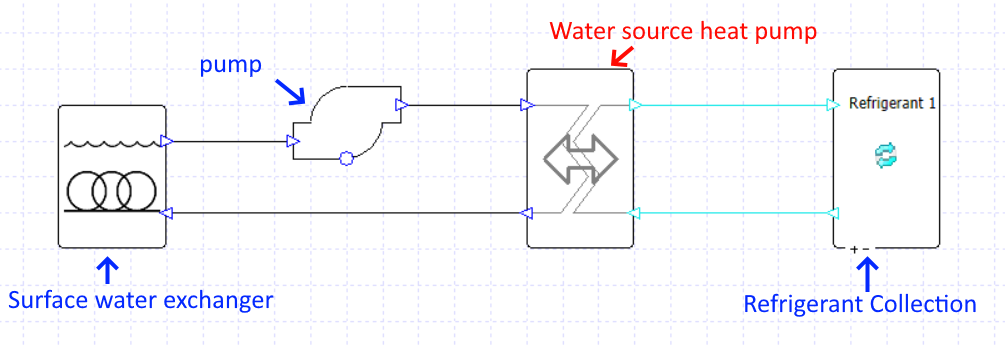
The water source heat pump bridges non compressible fluid circuits with refrigerant circuits.¶
Domestic Hot Water Collections¶
Domestic hot water collections (DHW collections) are used to group the hot water demand of zones. Usually they are grouped if they share a common domestic hot water source.
The domestic hot water demand of a zone is specified as an input in the internal condition for a zone in the Building Simulator in the System Parameters section:
The domestic hot water demand of a zone is correlated with a domestic hot water collection in the zone component for a zone:
Domestic hot water collections form part of DHW Circuits analogous to heating/cooling collections:
For more details about this component, see the relevant section of the component guide.
Refrigerant Collections¶
Refrigerant circuits move heat energy by compressing and expanding a refrigerant fluid. As explained in the Cooling Collections section, refrigerant circuits can transfer energy to cooling collections and vice versa when connected by components such as water source heat pumps.
Pressure is not modelled with refrigerant circuits so they do not feature an analogous component to fans and pumps, as it is assumed that the compressor provides adequate pressure for the refrigerant pipe length being modelled.
Refrigerant collections can have a pipe length property which can be used in conjunction with a pipe length modifier. For more details, see the refrigerant collection component in the component guide.
Electrical Collections¶
Every component powered by electricity is assigned to an electrical collection. Examples include fans and pumps, but also equipment and lighting loads can be assigned to electrical collections.
Lighting and equipment loads can be assigned to an electrical collection for a zone via the zone component for that zone.
Electrical collections also have a type field which is used for the electrical demand breakdown in the results:
For more details about electrical collections and how to assign components to an electrical collection, please see the corresponding section in the component guide.
Fuel Collections¶
Fuel collections are often used as an alternative to heating collections to model the case where fuel is consumed directly by a component at the zone level.
An example of where this might be useful is if you are modelling a space heater that burns natural gas or a biofuel directly in the zone to generate heat.
As this type of collection is used to model services directly in zones, they have no associated plant components such as pipes and pumps.
You can assign components to a fuel collection by editing the properties of various airside components and picking the
